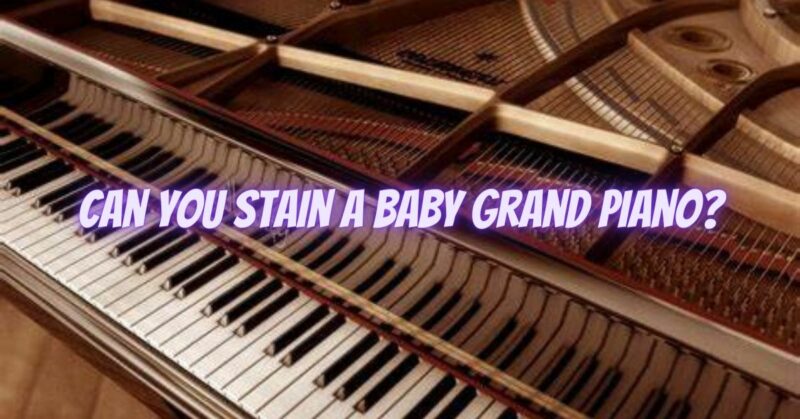A baby grand piano is a beautiful and intricate musical instrument that often showcases the natural beauty of its wood construction. While staining a baby grand piano is possible, it is a decision that requires careful consideration and evaluation of the piano’s existing finish, construction, and desired outcome. In this article, we will explore the feasibility of staining a baby grand piano and discuss important considerations to keep in mind.
Can a Baby Grand Piano be Stained? Staining a baby grand piano is technically feasible, but it is important to note that not all pianos are suitable candidates for staining. The ability to stain a piano depends on several factors, including the piano’s existing finish, type of wood, and the desired outcome. Some pianos have finishes that may resist stain absorption, making it challenging to achieve the desired color or effect. Additionally, some baby grand pianos may have veneered surfaces, which can be more difficult to stain evenly compared to solid wood construction.
Considerations before Staining a Baby Grand Piano:
- Existing Finish: Before considering staining, evaluate the piano’s existing finish. If the piano has a polyurethane, lacquer, or other non-porous finish, it may be more challenging to achieve a desired stain color or effect. In such cases, additional preparation, such as sanding or stripping the existing finish, may be necessary.
- Type of Wood: Different types of wood react differently to stains. Some woods, such as oak or mahogany, take stains well and produce rich and vibrant results. Others, like maple or cherry, may require special treatment or multiple coats to achieve the desired color. Consider the type of wood used in your baby grand piano and research the recommended stain products and application techniques.
- Desired Outcome: Clearly define your desired outcome before proceeding with staining. Determine the color, shade, and level of transparency you wish to achieve. Keep in mind that staining can darken or alter the appearance of the wood, and it may be challenging to reverse or adjust the stain once applied. Consider obtaining stain samples or consulting with professionals to ensure your desired outcome is feasible and aligns with your expectations.
- Professional Guidance: Seeking professional guidance from a qualified piano technician, furniture refinisher, or restoration specialist is highly recommended. They can evaluate the piano’s condition, provide advice on suitable staining options, and guide you through the process to ensure optimal results.
Conclusion: Staining a baby grand piano is a decision that should be approached with caution and careful consideration. While it is technically possible, various factors, such as the piano’s existing finish, wood type, and desired outcome, need to be taken into account. Consulting with professionals, including piano technicians or restoration specialists, can provide valuable insights and guidance throughout the process. Ultimately, thorough research, planning, and expert advice will help you determine if staining is a viable option for your baby grand piano and ensure that the end result meets your expectations.


